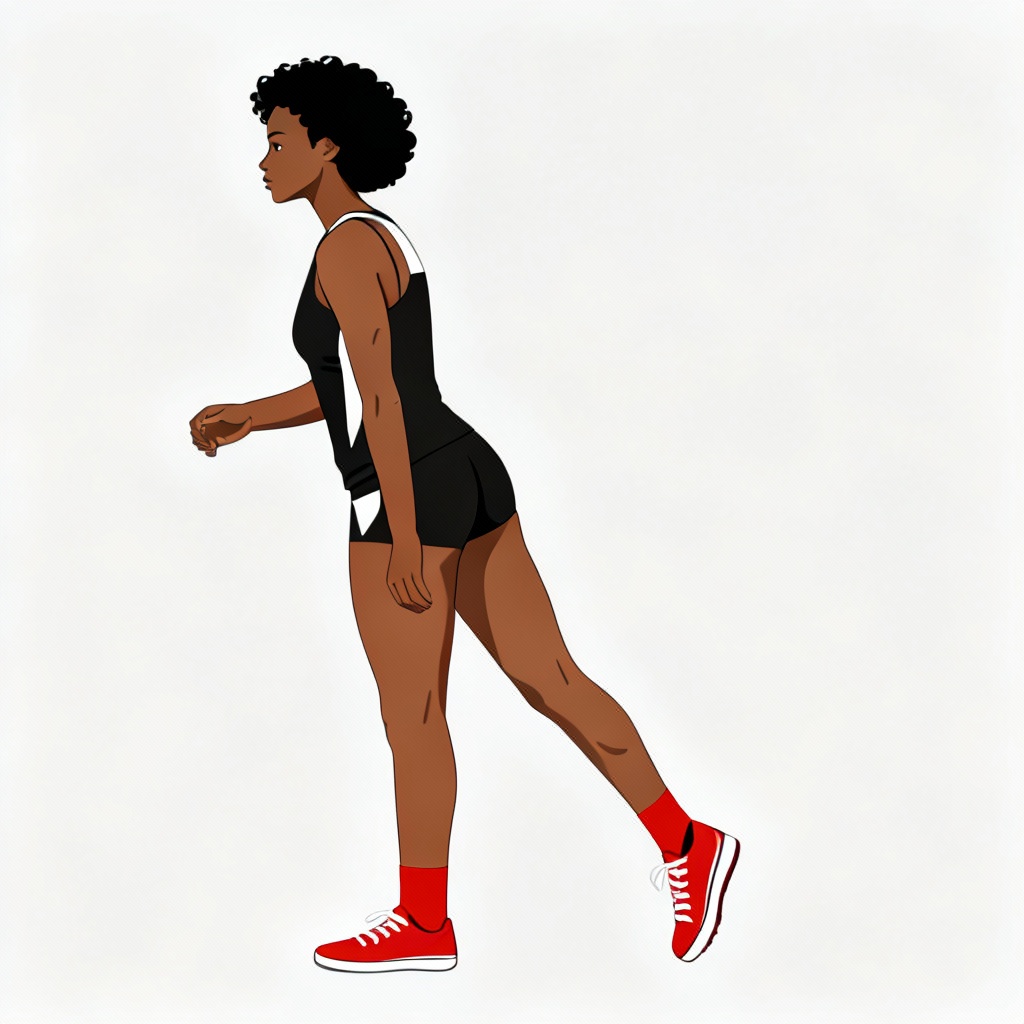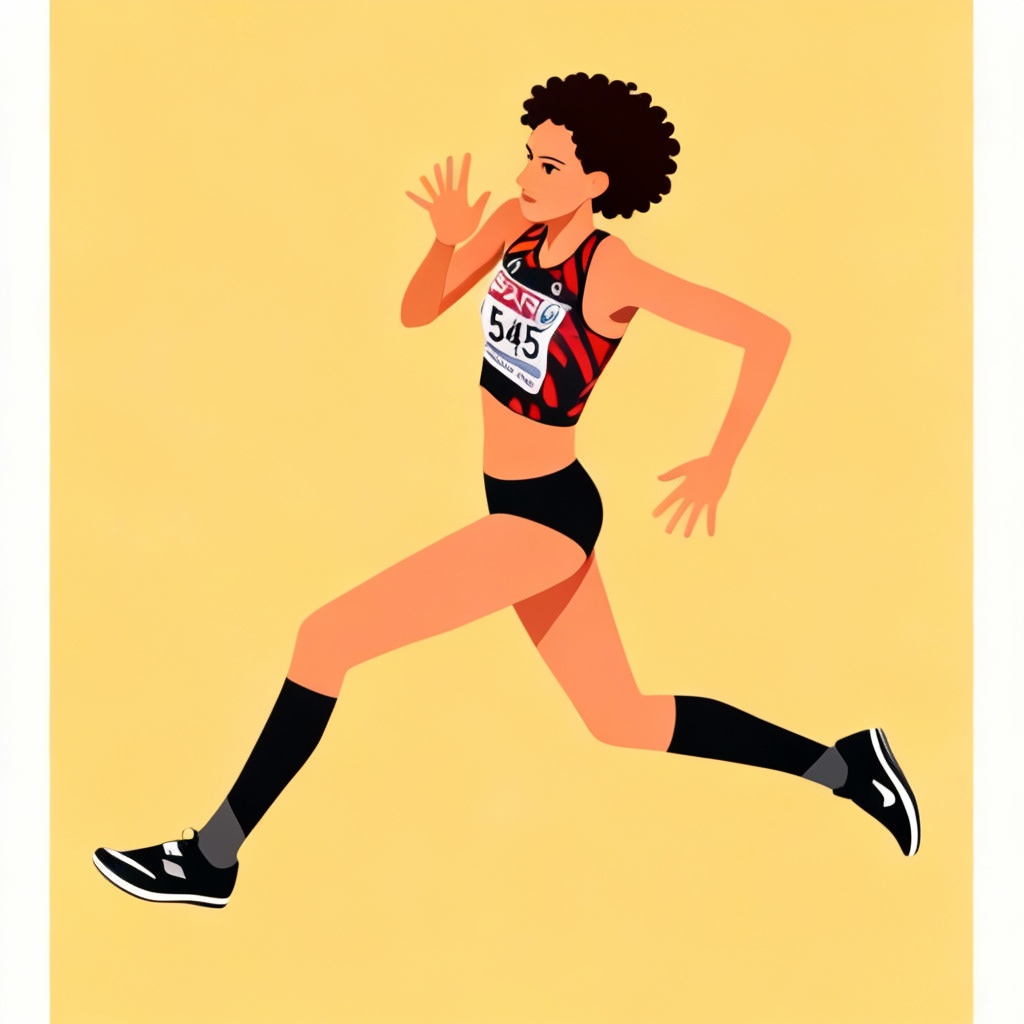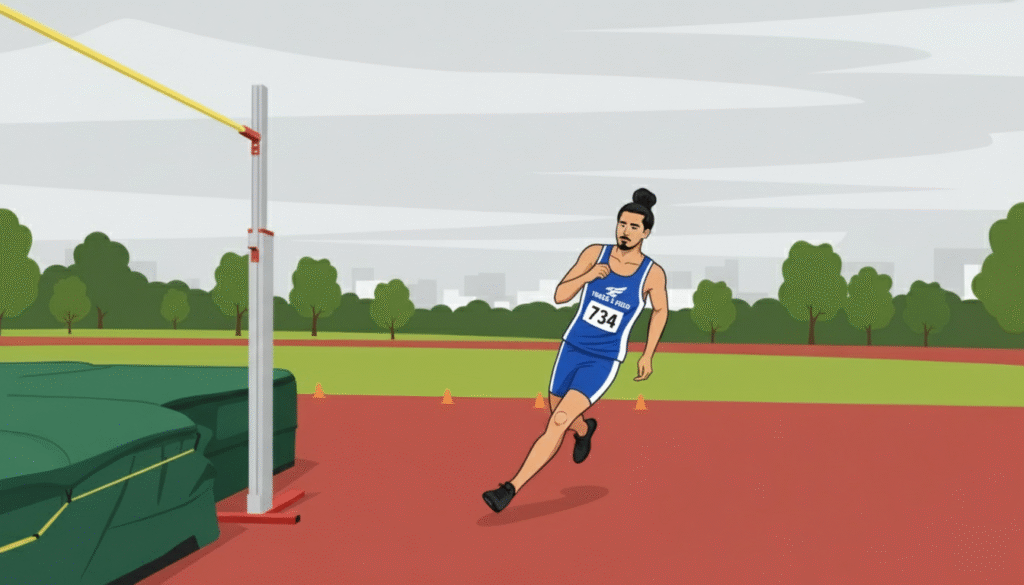Mastering the High Jump Approach Run: Introduction
The approach run is a critical component of the high jump, serving as the foundation for achieving maximum height and consistency. Many jumpers focus exclusively on the bar clearance, overlooking the power generator that propels them skyward: the approach run. This foundational phase isn’t merely about gathering speed—it’s a precise sequence that transforms horizontal momentum into vertical elevation.
Mastering this phase requires understanding the delicate balance between speed, angle, and body mechanics. Like a well-orchestrated dance, each step of your approach contributes to the final performance, with rhythm and precision determining your ultimate height. For elite jumpers, the approach run isn’t an afterthought—it’s where championships are won.
In this comprehensive guide, we’ll explore expert techniques to refine your approach run, breaking down the mechanics that separate good jumpers from great ones. Whether you’re competing at school level or aiming for national recognition, these strategies will help you break personal records and elevate your competitive edge. The path to higher jumps begins not at the take-off point, but with the very first step of your approach.
Mastering the High Jump Approach Run: Optimize Approach Run Mechanics
Refining the mechanics of your approach run lays the groundwork for a successful high jump. The approach isn’t simply about gaining speed—it’s about creating the perfect conditions for an explosive take-off. Every high jump approach run follows a distinct pattern that builds momentum while maintaining control, typically featuring a straight section followed by a curved path.
The J-shaped approach run has become standard among competitive high jumpers for good reason. This pattern allows athletes to convert horizontal speed into vertical lift through centrifugal force as they navigate the curve. For most jumpers, an approach of 8-10 strides proves optimal, though this may vary based on individual height, stride length, and strength.
Consistency is perhaps the most underrated aspect of high jump approach run technique. Without a repeatable pattern, jumpers find themselves making split-second adjustments that compromise power and precision. This is why elite jumpers measure their starting position meticulously and practice their approach runs independently of actual jumps.
Tracking your approach run can reveal valuable insights. Many coaches recommend placing markers at fixed points along your path to ensure consistency. Some jumpers even count their steps aloud during practice to internalize the rhythm that works best for them. These seemingly small details make enormous differences in competition settings where nerves can disrupt established patterns.
- Maintain a consistent stride pattern to ensure rhythm and balance by practicing your approach without the bar, focusing solely on foot placement and timing.
- Focus on proper foot placement to maximize efficiency and control, landing mid-foot rather than on your heels or toes to maintain momentum.
- Keep an upright posture to facilitate a smooth transition to take-off, avoiding the common mistake of leaning back or hunching forward during acceleration.

Mastering the High Jump Approach Run: Enhance High Jump Acceleration
Building acceleration is crucial for generating the speed needed to propel yourself over the bar. The relationship between approach speed and jump height is well-established in biomechanical research—faster approaches correlate with higher jumps, provided the speed can be effectively converted to vertical lift.
Many beginning jumpers make the critical error of starting too fast and then decelerating as they approach the bar. This pattern dramatically reduces jumping potential. Instead, elite jumpers build speed progressively, reaching maximum velocity in the final 3-4 strides before take-off. This progressive acceleration creates what coaches call ‘controlled speed’—fast enough to generate power but controlled enough to execute perfect technique.
Developing the explosive power necessary for high jump acceleration requires specific training beyond general fitness. Lower body plyometrics like box jumps and depth jumps develop the fast-twitch muscle fibers essential for explosive take-offs. Similarly, hill sprints and resisted running drills build the specific strength needed to accelerate effectively during your approach.
Your acceleration pattern should be personalized based on your physical attributes. Taller jumpers often benefit from longer approaches with more gradual acceleration, while shorter athletes may maximize performance with shorter, more explosive approaches. Experiment with different acceleration patterns during training, using video analysis to identify which pattern produces the most consistent results.
- Incorporate strength training exercises to boost leg power, focusing on squats, lunges, and plyometric movements that mimic the explosiveness required in high jump.
- Perform sprint drills to improve overall speed and agility, including high knees, butt kicks, and acceleration runs over 20-30 meters.
- Focus on explosive movements to enhance quickness during the run, training your neuromuscular system to generate maximum force in minimal time.

Mastering the High Jump Approach Run: Conclusion
Mastering the approach run in high jump is a multifaceted endeavor that requires attention to mechanics, speed, angle, and lift. The interconnected nature of these elements means that improvement in one area often enhances performance across all aspects of your jump.
By optimizing your run mechanics through consistent stride patterns and proper postural alignment, you establish the foundation for technical excellence. Enhancing acceleration through targeted strength and speed training provides the power necessary for higher jumps. Perfecting your take-off angle ensures efficient conversion of horizontal speed into vertical elevation, while maximizing lift through coordinated body movements completes the performance equation.
Remember that refinement of your high jump approach run technique requires patience and systematic practice. Elite jumpers spend years perfecting these elements, making incremental improvements that compound over time. Video analysis, coaching feedback, and consistent training are invaluable tools in this journey.
Implementing these expert strategies will not only help you achieve higher and more consistent jumps but also reduce injury risk through improved biomechanics. As you integrate these techniques into your training regimen, you’ll discover personal patterns and preferences that enhance your individual jumping style.
Embrace these techniques with dedication and attention to detail to elevate your athletic prowess and reach new heights in your high jump journey. The bar awaits—not as an obstacle, but as a milestone on your path to jumping excellence.

Mastering the High Jump Approach Run: Conclusion
Mastering the approach run in high jump is a multifaceted endeavor that requires attention to mechanics, speed, angle, and lift. The interconnected nature of these elements means that improvement in one area often enhances performance across all aspects of your jump.
By optimizing your run mechanics through consistent stride patterns and proper postural alignment, you establish the foundation for technical excellence. Enhancing acceleration through targeted strength and speed training provides the power necessary for higher jumps. Perfecting your take-off angle ensures efficient conversion of horizontal speed into vertical elevation, while maximizing lift through coordinated body movements completes the performance equation.
Remember that refinement of your high jump approach run technique requires patience and systematic practice. Elite jumpers spend years perfecting these elements, making incremental improvements that compound over time. Video analysis, coaching feedback, and consistent training are invaluable tools in this journey.
Implementing these expert strategies will not only help you achieve higher and more consistent jumps but also reduce injury risk through improved biomechanics. As you integrate these techniques into your training regimen, you’ll discover personal patterns and preferences that enhance your individual jumping style.
Embrace these techniques with dedication and attention to detail to elevate your athletic prowess and reach new heights in your high jump journey. The bar awaits—not as an obstacle, but as a milestone on your path to jumping excellence.

